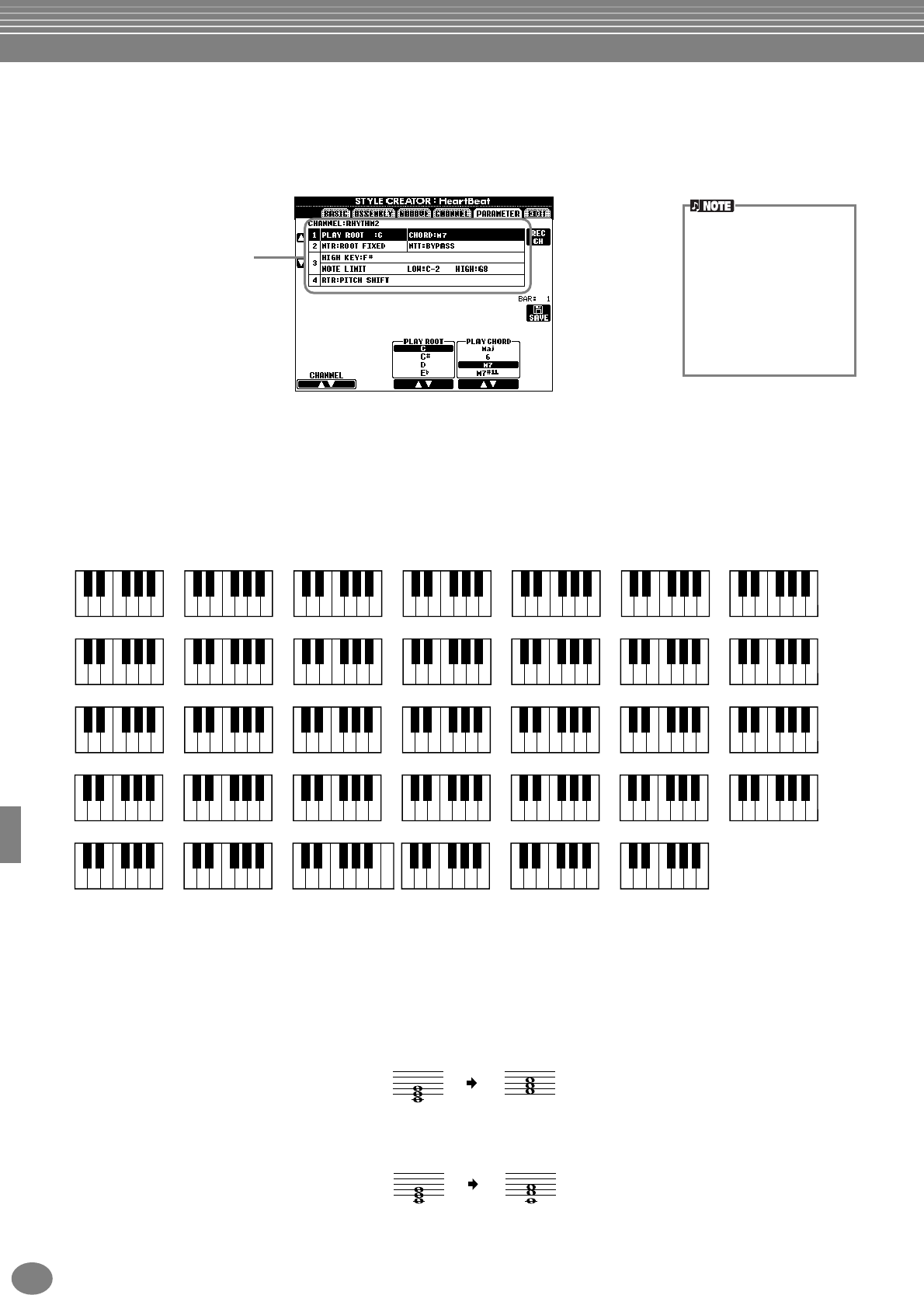
Creating Accompaniment Styles — Style Creator
PSR-2000/1000
116
Making Style File Format Settings —Parameter
This display provides a variety of style controls— such as determining how the pitch and sound of the recorded style
change when playing the chords in the left-hand range of the keyboard. For details about the relationship between the
parameters, refer to “Style File Format” on page 109. The operations here are the same as described in step 4 on page 109.
■ Source Root/Chord
These settings determine the original key of the source pattern (i.e., the key used when recording the pattern). The default
setting of CM7 (with a Source Root of “C” and a Source Type of“M7”), is automatically selected whenever the preset data
is deleted prior to recording a new style, regardless of the Source Root and Chord included in the preset data. When you
change Source Root / Chord from the default CM7 to another chord, the chord notes and recommended notes will also
change, depending on the newly selected chord type. For details on chord notes and recommended notes, see page 111.
■ NTR (Note Transposition Rule) and NTT (Note Transposition Table)
• NTR (Note Transposition Rule)
This determines the system for pitch conversion of the source pattern. Two settings are available.
Root Trans (Root Transpose)
When the root note is transposed, the pitch relationship between notes is maintained. For example, the notes C3,
E3 and G3 in the key of C become F3, A3 and C4 when they are transposed to F. Use this setting for channels that
contain melody lines.
Root Fixed
The note is kept as close as possible to the previous note range. For example, the notes C3, E3 and G3 in the key
of C become C3, F3 and A3 when they are transposed to F. Use this setting for channels that contain chord parts.
When NTR is set to “Root
Fixed” and NTT is set to
“Bypass,” the “Source
Root” and “Source Chord”
parameters are changed to
“Play Root” and “Play
Chord,” respectively. In this
case, you can change
chords and hear the result-
ing sound for all channels.
See the explanations below.
CRC CR CRC C RC CRC C CR CRC C CR
C
CCC CR
CCC C CR CCC C RC
CRC
RCR
CR CR
C
CR CCR
C
CCR
CC
CR
RRCCC
CC RC
C
CC RC
CC
CR CC
CC
CR C CR
C
CC RC C
C
CR
CCR
CR R RC
CCR
CCC
C
CCC
C
CRC
CC
CCC C
C
CRC CR
CC
CRC CC
C
CCC
CC
CCCR
RCC
CCC
RCC
CRC CRR
C
CRC
RCC
CC
CC
CR CC CCR CR
CMaj
Cm
C7
CM7
CM7
9
C6
9
Caug Cm6
Cm7
Cm7
5Cm7
9
Cm7
11
CmM7 CmM7
9
Cdim
Cdim7
C7
9
C7
13
C7
9
Csus4
Csus2
C1+8
C1+5
C7
5
C6
Cm
9
CM7
11
C7
11
C7
9
C7aug
CM7aug
C7sus4
C9
C7
13
When the Source Root is C:
C = chord note
C, R = recommended
note


















